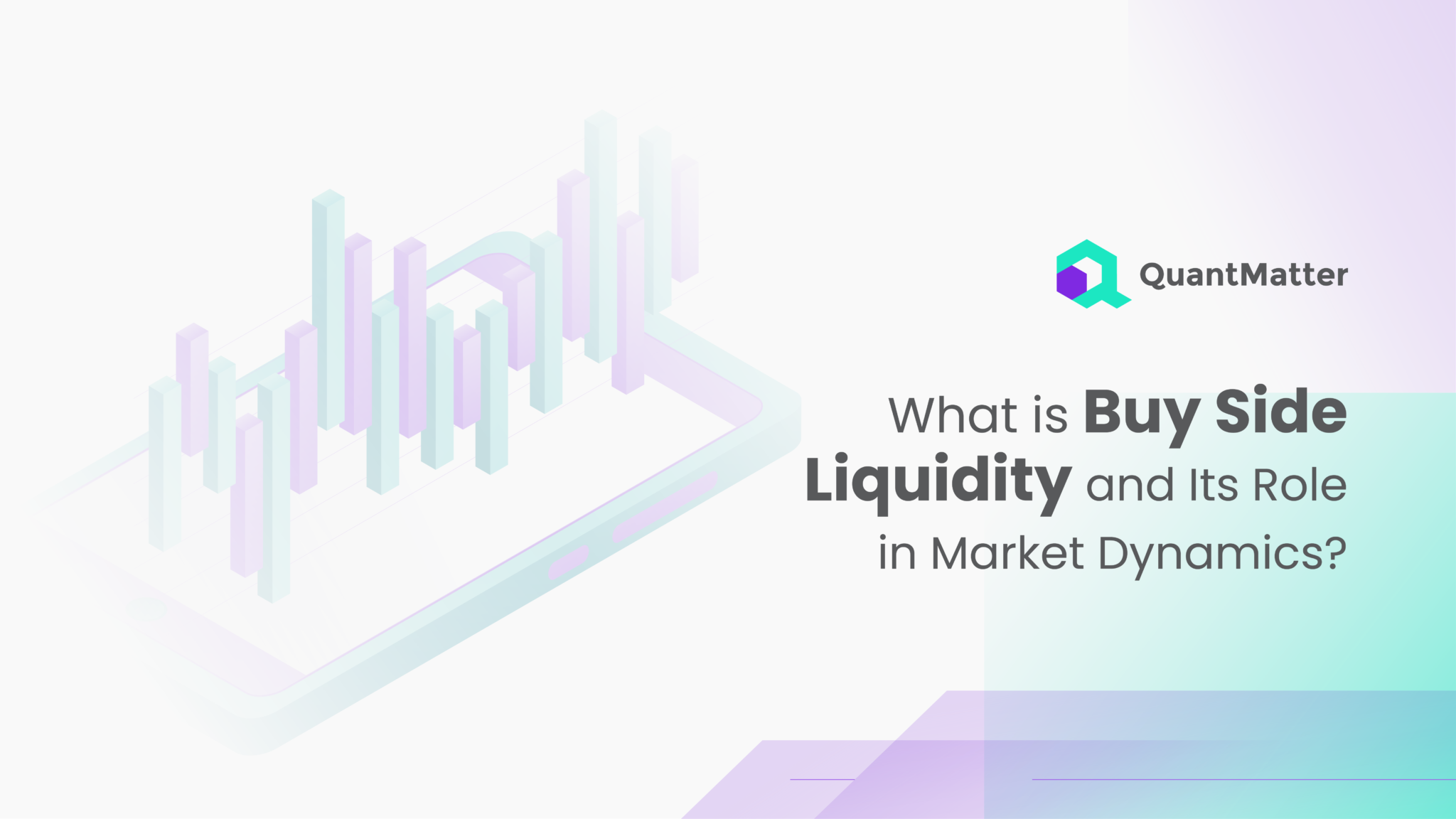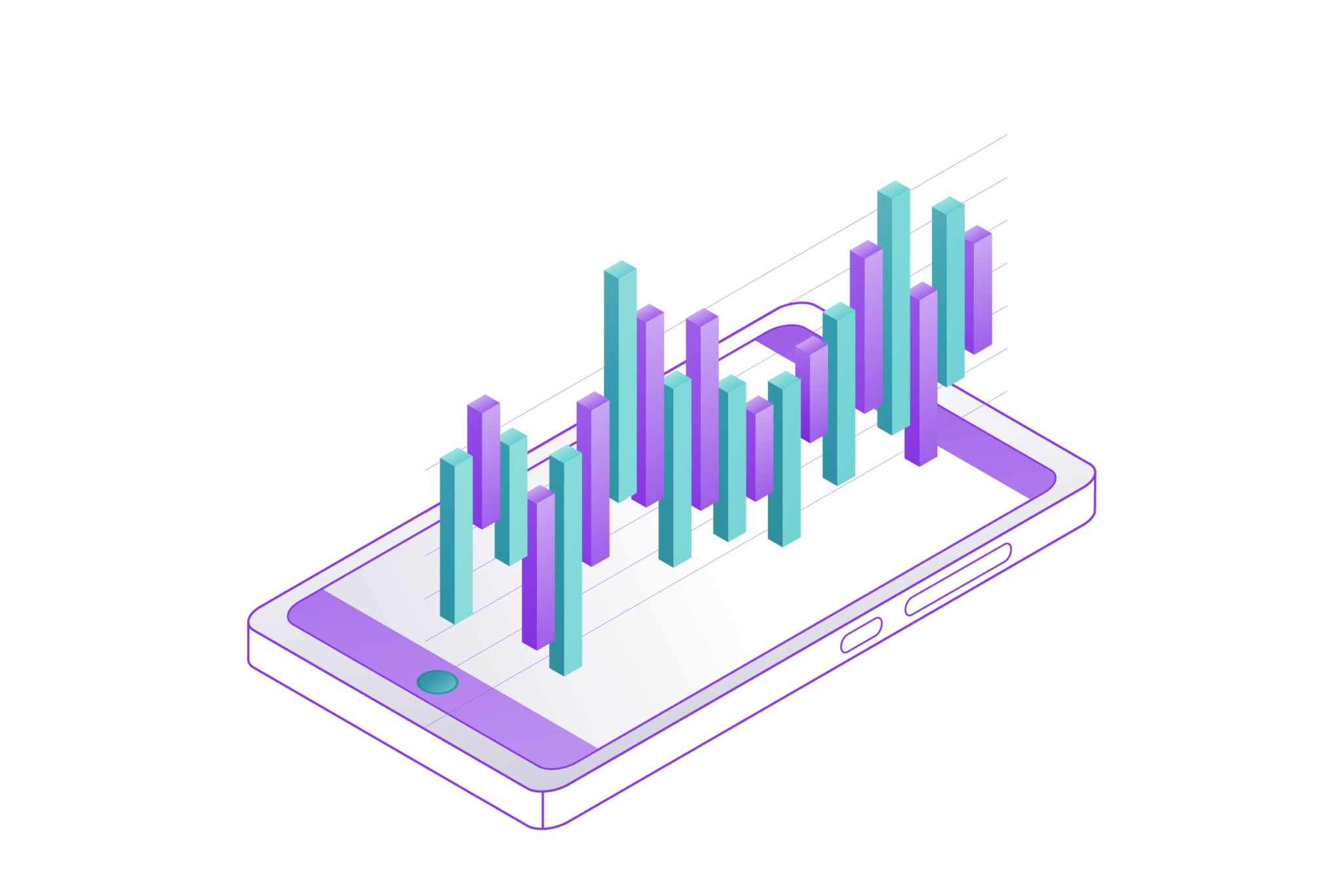
In the world of finance, understanding market dynamics is crucial for making informed investment decisions. One of the key concepts in this realm is buy side liquidity. This term might sound complex, but it plays a vital role in how markets function and how prices are determined. In this article, we will delve into what buy side liquidity is, how it operates, and its significance in market dynamics.
Buy side liquidity refers to the demand for securities from investors who want to buy. These buyers can be individual investors, institutional investors like mutual funds and pension funds, or other entities looking to purchase assets. The level of buy side liquidity can greatly influence market prices and the ease with which securities can be traded.
Understanding buy side liquidity is essential for anyone involved in financial markets, from individual traders to large institutions. It helps in gauging market conditions, predicting price movements, and making strategic investment decisions. Let’s explore this concept in more detail and see how it impacts the broader market.
What is Buy Side Liquidity?

Buy side liquidity is essentially the availability of buyers in the market who are ready and willing to purchase securities at various price levels. It reflects the demand side of the market and is a critical factor in determining market prices. When there is high buy side liquidity, it means there are many buyers, which can drive up the price of securities. Conversely, low buy side liquidity can lead to lower prices as there are fewer buyers in the market.
The concept of liquidity in financial markets is twofold, comprising both buy side and sell side liquidity. While sell side liquidity refers to the availability of securities for sale, buy side liquidity focuses on the demand for these securities. Together, they create the conditions for trading and price discovery.
How Buy Side Liquidity Affects Market Prices

The level of buy side liquidity directly impacts market prices. When there are more buyers than sellers, the increased demand typically pushes prices up. This scenario is often seen in bullish markets where investor confidence is high. For example, during periods of economic growth or positive news about a company, more investors are willing to buy, leading to higher prices.
Conversely, when buy side liquidity is low, it can result in downward pressure on prices. This is often observed in bearish markets or during times of economic uncertainty. For instance, in a recession or when a company releases poor financial results, there may be fewer buyers, causing prices to drop as sellers compete to find buyers.
Market makers and liquidity providers play a significant role in maintaining buy side liquidity. They ensure that there are always buyers and sellers in the market, thus facilitating smooth trading operations. By providing buy side liquidity, these entities help stabilize prices and reduce the volatility that can arise from imbalances in supply and demand.
Importance of Buy Side Liquidity
Buy side liquidity is crucial for several reasons:
1. Price Stability
Adequate buy side liquidity plays a vital role in maintaining price stability in the market. When there are enough buyers, large sell orders can be absorbed without causing significant price drops. This is particularly important during times of market stress or when large institutional investors need to liquidate positions. Without sufficient buy side liquidity, these large sell orders could create sharp, disruptive price movements, leading to increased volatility and potential market panics. By stabilizing prices, buy side liquidity ensures a smoother and more predictable trading environment.
2. Market Efficiency
High liquidity is a cornerstone of market efficiency. When liquidity is ample, trades can be executed quickly and at prices close to the current market value. This reduces the likelihood of slippage, where the final execution price deviates from the expected price. Efficient markets benefit all participants as they provide a reliable environment for buying and selling assets. It also means that information is quickly reflected in asset prices, leading to more accurate price discovery. In an efficient market, resources are allocated more effectively, contributing to overall economic growth.
Also Read: What Are Forex Trends and How to Identify Them?
3. Lower Transaction Costs
In markets with high liquidity, the bid-ask spread—the difference between the price buyers are willing to pay and the price sellers are asking—is typically narrower. This reduces the cost of trading for investors. Lower transaction costs make it more economical for investors to buy and sell assets, which can encourage greater participation in the market. For retail investors, lower costs mean more of their investment is actually working for them rather than being eaten up by fees. For institutional investors, it allows for more efficient execution of large orders, enhancing their overall portfolio performance.
4. Risk Management
Effective risk management relies heavily on the ability to enter and exit positions swiftly. In a liquid market, investors can quickly adjust their portfolios in response to market changes, economic news, or shifts in their own risk tolerance. For example, if negative news affects the outlook for a particular asset, investors can sell their holdings without significantly impacting the price, thereby limiting their losses. Similarly, liquidity enables investors to seize opportunities as they arise, such as buying undervalued assets. This flexibility is crucial for both individual and institutional investors in managing their investment risks.
Understanding buy side liquidity is essential for investors, traders, and market participants. It influences market prices, affects trading strategies, and plays a pivotal role in the overall health of financial markets. By monitoring liquidity levels and the factors that impact them, stakeholders can make more informed decisions and navigate market fluctuations more effectively.
Factors Influencing Buy Side Liquidity

Buy side liquidity is a critical aspect of financial markets, reflecting the availability of securities that investors are willing to purchase at any given time. High buy side liquidity indicates a market with ample buying interest, facilitating smoother transactions and enhancing market efficiency. Conversely, low buy side liquidity can lead to greater volatility and challenges in executing trades. Understanding the factors that influence buy side liquidity is essential for investors, policymakers, and market participants. Several factors can influence buy side liquidity in financial markets. These include:
Economic Indicators
Positive economic indicators such as GDP growth, low unemployment rates, and strong corporate earnings can boost investor confidence and increase buy side liquidity. When the economy is performing well, investors are more likely to invest in the market, anticipating higher returns. For instance, a country reporting a significant GDP growth rate may see an influx of investments as it signals economic stability and potential for profit.
Monetary Policy
Central banks’ monetary policies, such as interest rate adjustments and quantitative easing, can affect the availability of funds for investment, thereby impacting buy side liquidity. Lower interest rates reduce the cost of borrowing, encouraging businesses and individuals to take loans and invest in various financial instruments. Conversely, higher interest rates might reduce liquidity as borrowing costs rise. Quantitative easing, which involves the central bank purchasing securities to increase the money supply, directly injects liquidity into the market, boosting buy side activity.
Market Sentiment
Investor sentiment, driven by news, geopolitical events, and market trends, can significantly influence the demand for securities. Positive sentiment usually increases buy side liquidity, while negative sentiment can reduce it. For example, favorable news about a company’s earnings can lead to a surge in its stock purchases, whereas political instability or adverse economic news can lead to a sell-off, reducing buy side liquidity.
Regulatory Environment
Changes in regulations and compliance requirements can also affect buy side liquidity. Favorable regulatory conditions can encourage more buying activity, while restrictive regulations might dampen it. For example, deregulation in certain sectors can attract more investors due to reduced compliance costs and increased potential for profit. On the other hand, stringent regulations and increased scrutiny might deter investment, reducing liquidity.
Technological Advancements
The advent of high-frequency trading, algorithmic trading, and other technological innovations has made it easier for investors to participate in the market, thus enhancing buy side liquidity. Technology has enabled faster and more efficient trade executions, reduced transaction costs, and provided access to real-time market data. These advancements allow institutional and retail investors to react quickly to market changes, thereby increasing overall market liquidity.
Investor Diversification
The growing trend of diversification among investors, including the rise of exchange-traded funds (ETFs) and mutual funds, can also impact buy side liquidity. Diversified portfolios tend to include a variety of asset classes, which can stabilize markets and maintain liquidity levels even during volatile periods. For example, if a particular sector experiences a downturn, diversified funds might balance their portfolios by purchasing assets from more stable sectors, thereby maintaining liquidity.
Globalization and Foreign Investment
Globalization and the ease of cross-border investments have significantly influenced buy side liquidity. Foreign investors bring additional capital into domestic markets, increasing liquidity. For instance, an emerging market with high growth potential might attract foreign investment, boosting its liquidity. Conversely, geopolitical tensions or unfavorable foreign policies can deter foreign investments, reducing liquidity.
Corporate Actions
Corporate actions such as mergers and acquisitions, stock buybacks, and dividend announcements can influence buy side liquidity. Positive corporate actions can attract investors, increasing demand for the company’s stock. For example, a company announcing a stock buyback may boost investor confidence, leading to increased purchases and higher liquidity.
Market Structure and Access
The structure of financial markets and the ease of access for various participants can also affect buy side liquidity. Well-structured markets with transparent operations and accessible trading platforms tend to have higher liquidity. For instance, markets that offer easy access to retail investors through online trading platforms and mobile apps can see increased participation, enhancing liquidity.
By considering these factors, investors and policymakers can better understand and manage buy side liquidity in financial markets.
The Role of Institutional Investors in Buy Side Liquidity
Institutional investors, such as mutual funds, hedge funds, and pension funds, play a crucial role in providing buy side liquidity. These large entities have substantial capital to invest and often engage in significant buying activity. Their participation can greatly influence market prices and liquidity levels.
Institutional investors often conduct extensive research and analysis before making investment decisions. Their buying patterns are usually based on long-term strategies rather than short-term market fluctuations. This steady demand from institutional investors helps in maintaining consistent buy side liquidity, contributing to market stability.
Moreover, institutional investors are often involved in large-scale trades that can impact the overall market. Their buying decisions are closely watched by other market participants, and their actions can create ripple effects throughout the market, affecting prices and liquidity levels.
Challenges and Opportunities in Managing Buy Side Liquidity
Managing buy-side liquidity presents both challenges and opportunities for investors and market participants.
Challenges
- Market Volatility: One of the main challenges is dealing with market volatility. Sudden shifts in market sentiment or economic conditions can lead to rapid changes in buy-side liquidity, making it difficult to predict price movements and execute trades effectively. For instance, geopolitical events, unexpected economic data releases, or changes in interest rates can cause significant market fluctuations. These fluctuations can widen bid-ask spreads, increase trading costs, and result in slippage, where trades are executed at prices different from those expected.
- Market Manipulation: Another challenge is the potential for market manipulation. In some cases, large investors or institutions might attempt to manipulate buy-side liquidity to influence prices for their benefit. This could involve tactics such as spoofing (placing large orders with no intention of executing them) to create a false impression of demand or supply. Regulatory bodies like the SEC (Securities and Exchange Commission) and CFTC (Commodity Futures Trading Commission) continuously monitor markets to prevent such activities and ensure fair trading practices. However, sophisticated manipulation techniques can sometimes evade detection, posing a risk to market integrity.
- Fragmented Markets: The presence of multiple trading venues, including traditional exchanges and dark pools, can fragment liquidity. This fragmentation makes it challenging to get a complete view of the market and to execute large orders without impacting prices. Navigating these fragmented markets requires sophisticated algorithms and smart order routing techniques to access liquidity efficiently.
- Operational Risks: Operational risks, such as system failures, cyber-attacks, or human errors, can also affect buy-side liquidity management. Ensuring robust IT infrastructure, cybersecurity measures, and effective risk management practices are essential to mitigate these risks.
Opportunities
- Technological Advancements: Despite these challenges, there are significant opportunities for investors who can effectively navigate buy-side liquidity. Technological advancements and data analytics provide powerful tools to better assess and manage buy-side liquidity. For example, machine learning algorithms can analyze vast amounts of market data to identify patterns and predict liquidity changes. These insights can help traders make more informed decisions and optimize their execution strategies.
- Algorithmic Trading: Algorithmic trading allows investors to execute large orders in smaller, manageable chunks, reducing the market impact and optimizing execution costs. Advanced algorithms can adapt to real-time market conditions, providing a strategic edge in managing buy-side liquidity.
Also Read: 10 Facts About Investing You Should Know
- Access to Diverse Liquidity Pools: The rise of electronic trading platforms and alternative trading systems has expanded access to diverse liquidity pools. Investors can tap into these pools to find better pricing and execution opportunities, especially for large or illiquid trades. Dark pools, for instance, allow for the execution of large trades without revealing the trade size to the public market, thus minimizing price impact.
- Enhanced Risk Management: Improved risk management frameworks and tools enable investors to better manage the risks associated with buy-side liquidity. Stress testing, scenario analysis, and real-time risk monitoring help investors anticipate and mitigate potential liquidity risks.
- Regulatory Support: While regulatory scrutiny can be seen as a challenge, it also presents opportunities for a more transparent and fair trading environment. Compliance with regulations such as MiFID II (Markets in Financial Instruments Directive II) enhances market transparency and investor protection, fostering a more stable and predictable trading environment.
By understanding the factors that influence liquidity and closely monitoring market conditions, investors can identify favorable buying opportunities. Implementing advanced trading technologies and strategies allows investors to manage buy-side liquidity more effectively, turning potential challenges into profitable opportunities.
Managing buy-side liquidity requires a comprehensive approach that combines technology, data analytics, and robust risk management. By leveraging these tools, investors can navigate the complexities of the market, mitigate risks, and capitalize on opportunities for better investment outcomes.
Conclusion
In summary, buy side liquidity is a fundamental concept in financial markets, representing the demand for securities from buyers. It plays a critical role in determining market prices and ensuring smooth trading operations. High buy side liquidity typically leads to rising prices, while low liquidity can result in price declines.
Several factors, including economic indicators, monetary policy, market sentiment, regulatory environment, and technological advancements, influence buy side liquidity. Institutional investors are key players in providing buy side liquidity, and their actions can significantly impact market dynamics.
While managing buy side liquidity presents challenges such as market volatility and potential manipulation, it also offers opportunities for savvy investors. By understanding and monitoring buy side liquidity, investors can make more informed decisions and capitalize on favorable market conditions.
Ultimately, buy side liquidity is essential for a healthy and functioning market. It ensures that there are always buyers for securities, facilitating price discovery and reducing volatility. As market participants continue to evolve and adapt to changing conditions, buy side liquidity will remain a crucial aspect of financial markets.
Disclaimer: The information provided by Quant Matter in this article is intended for general informational purposes and does not reflect the company’s opinion. It is not intended as investment advice or a recommendation. Readers are strongly advised to conduct their own thorough research and consult with a qualified financial advisor before making any financial decisions.

Joshua Soriano
As an author, I bring clarity to the complex intersections of technology and finance. My focus is on unraveling the complexities of using data science and machine learning in the cryptocurrency market, aiming to make the principles of quantitative trading understandable for everyone. Through my writing, I invite readers to explore how cutting-edge technology can be applied to make informed decisions in the fast-paced world of crypto trading, simplifying advanced concepts into engaging and accessible narratives.
- Joshua Soriano#molongui-disabled-link
- Joshua Soriano#molongui-disabled-link
- Joshua Soriano#molongui-disabled-link
- Joshua Soriano#molongui-disabled-link
